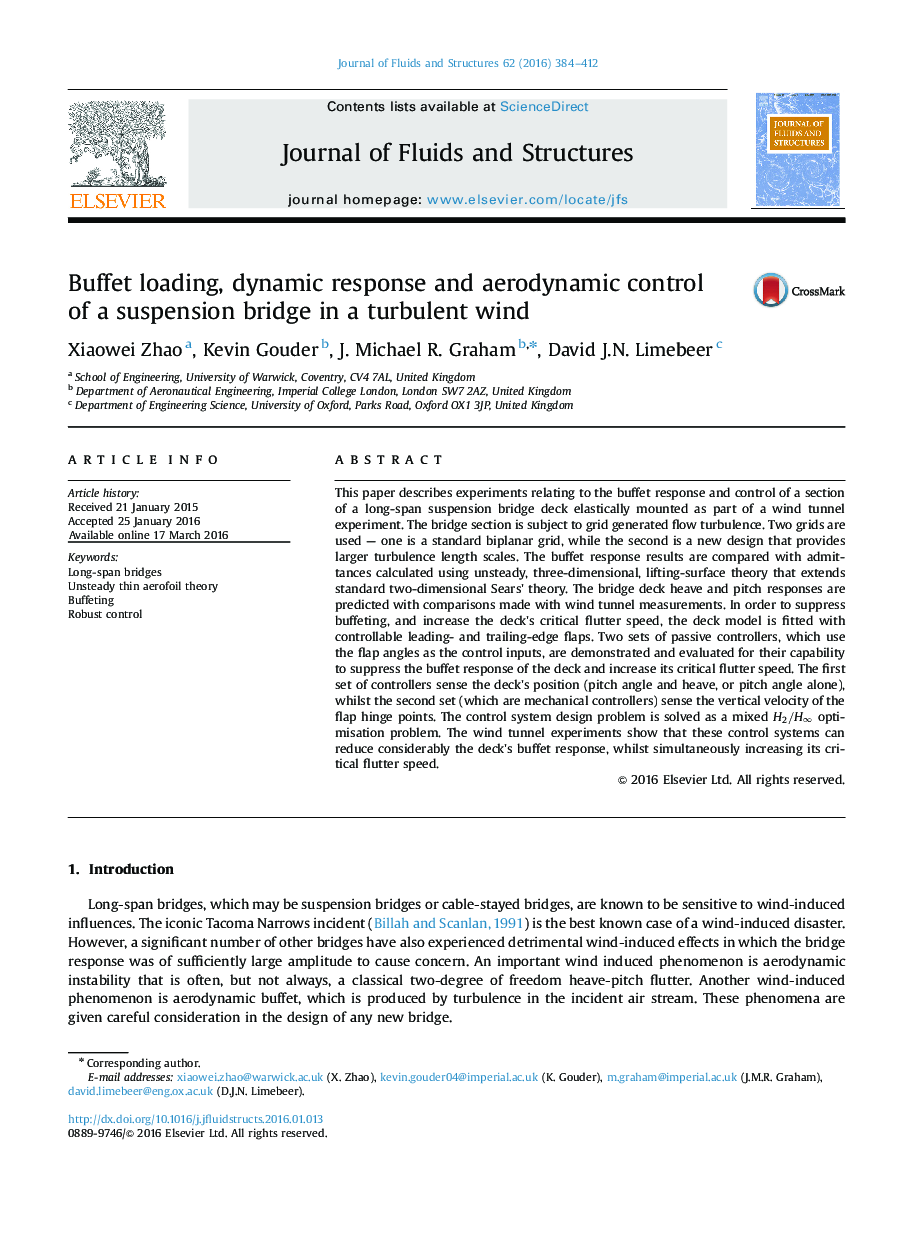| کد مقاله | کد نشریه | سال انتشار | مقاله انگلیسی | نسخه تمام متن |
|---|---|---|---|---|
| 792279 | 1466585 | 2016 | 29 صفحه PDF | دانلود رایگان |
• Wind tunnel experiment: bridge deck section with leading and trailing edge flaps.
• Buffet response to grid-generated turbulence compared to 3D lifting surface theory.
• Buffet suppression control system investigated theoretically and experimentally.
• Deck position or velocity feedback; controllable leading and trailing edge flaps.
• Control reduced buffet response, simultaneously increased critical flutter speed.
This paper describes experiments relating to the buffet response and control of a section of a long-span suspension bridge deck elastically mounted as part of a wind tunnel experiment. The bridge section is subject to grid generated flow turbulence. Two grids are used — one is a standard biplanar grid, while the second is a new design that provides larger turbulence length scales. The buffet response results are compared with admittances calculated using unsteady, three-dimensional, lifting-surface theory that extends standard two-dimensional Sears׳ theory. The bridge deck heave and pitch responses are predicted with comparisons made with wind tunnel measurements. In order to suppress buffeting, and increase the deck׳s critical flutter speed, the deck model is fitted with controllable leading- and trailing-edge flaps. Two sets of passive controllers, which use the flap angles as the control inputs, are demonstrated and evaluated for their capability to suppress the buffet response of the deck and increase its critical flutter speed. The first set of controllers sense the deck׳s position (pitch angle and heave, or pitch angle alone), whilst the second set (which are mechanical controllers) sense the vertical velocity of the flap hinge points. The control system design problem is solved as a mixed H2/H∞H2/H∞ optimisation problem. The wind tunnel experiments show that these control systems can reduce considerably the deck׳s buffet response, whilst simultaneously increasing its critical flutter speed.
Journal: Journal of Fluids and Structures - Volume 62, April 2016, Pages 384–412
